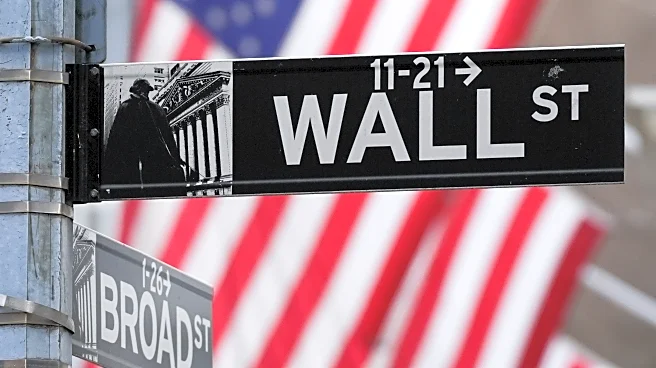What's Happening?
AnchorX, a financial technology company, has launched the first regulated stablecoin tied to the international version of the Chinese yuan (CNH), known as AxCNH. This debut took place at the Belt and Road Summit in Hong Kong, marking a significant regulatory shift in China towards embracing stablecoins for international markets. The AxCNH stablecoin is designed to facilitate cross-border transactions with countries involved in the Belt and Road initiative, which aims to build infrastructure linking China to the Middle East and Europe, as well as establishing maritime trade routes. Additionally, BDACS, a digital asset infrastructure company, announced the launch of KRW1, a Korean won-pegged stablecoin. Both stablecoins are overcollateralized, meaning they are fully backed by fiat currency deposits or government debt instruments held by a custodian.
Why It's Important?
The introduction of these stablecoins highlights the growing geo-strategic importance of digital currencies as sovereign governments seek to place their fiat currencies on digital platforms. This move aims to increase international demand for their currencies, potentially offsetting inflationary effects caused by currency printing. By utilizing blockchain technology, these stablecoins offer near-instant, cross-border settlement, making fiat currencies more accessible globally. This development could impact the legacy financial system, which is often slow and requires robust infrastructure that may not exist in developing areas. The U.S. government, facing a national debt exceeding $37 trillion, is reportedly attempting to offset this debt with stablecoins and gold to boost confidence in the declining U.S. dollar.
What's Next?
As stablecoins gain traction, more countries may follow suit, launching their own digital currencies to enhance international trade and financial stability. This could lead to increased competition among nations to establish their currencies as preferred options for global transactions. The ongoing development of stablecoins may also prompt regulatory bodies to establish clearer guidelines and frameworks to ensure their safe and effective use in international markets.
Beyond the Headlines
The rise of stablecoins could lead to significant shifts in global financial dynamics, potentially reducing reliance on traditional banking systems and altering the way international trade is conducted. Ethical and legal considerations may arise as governments and financial institutions navigate the complexities of digital currency regulation and its impact on global economic stability.












